Some foods are worth waiting for. BBQ brisket comes to mind, as does home-cured bacon. Equally good—but rarely thought about—is a skin-on shoulder or leg of pork. With the entire layer of subcutaneous fat still intact, a large cut like this takes on an unctuous richness that is normally only found in pork belly or the point of a brisket.
A large cut like this also takes a long time to cook, and that’s actually great for festive entertaining. You can put it in the oven in the morning and go about your party preparations without having to worry about it until later. It’s presentation-piece gorgeous with slow-cooker ease. But there are things that you need to get right, especially when it comes to temperature. Read on and learn about how to slow roast your way to perfection with the help of your ChefAlarm® thermometer.
Contents:
Skin-on pork shoulder/leg
The pork shoulder (also called the Boston Butt or simply pork butt) is, of course, a classic BBQ meat. Located atop the front leg of the hog, the shoulder is often slowly cooked over smoldering hardwood and usually shredded. It is full of fat and collagen that both render at higher temperatures to create tender, juicy pork for pulling, chopping or even slicing.
Harder to find in many places is a skin-on pork shoulder. Leaving the skin on the cut ensures that the entire layer of fat between the skin and the meat is left intact—none of that pesky trimming of fat has happened! That thick fat layer brings treasured richness and flavor to the pork.
But you probably already know all that!
Did you know, though, that there is an equally good cut at the other end of the hog? The fresh ham or picnic ham is just what its name implies: the top of the hind leg of the hog (the ham) that has not been cured or smoked. They are often used in Puerto Rican Pernil, but find limited use on most American tables. This is a shame, as they are equally fatty, collagen-y, and delicious when slowly cooked.
And slow cooking is what we will do! This recipe calls for an oven at only 225°F (107°C)! At that speed, it takes about 10 hours to cook this roast.
Note: A whole fresh ham can weigh upwards of 20 pounds, which is absolutely huge. For this recipe, we used a 10-pound portion from the shank end of the ham—the part closest to the foot—with great success. If your butcher doesn’t have fresh ham on hand, ask for a whole shoulder with the skin on it. They are equally good, but the leg is easier to carve because the bone in it is straight and easy to navigate.
The stall
If you have done any BBQ, you are familiar with the dreaded stall. The stall occurs when the fibers of the meat tighten so much that they wring out their water. This water makes its way to the surface, cooling the meat by evaporation.
In this oven cook, we encounter the same phenomenon. This meat can stall for a long time. But we don’t need to completely get through the stall for this cook, because we’re not trying to make pulled pork. This pork roast is for slicing, and as such needn’t be cooked to the fully broken-down 203°F (95°C) that pulled pork must attain.
Instead we’ll cook into the stall, but not all the way through it. Use your ChefAlarm to tell you when you get into the stall and then cook the meat for about an hour in the stall. Don’t wrap it, crutchlike, to get through the stall. The result is a sliceable roast that is tender—but not falling completely apart—and is still juicy.
Prepping a skin on shoulder or ham
To prepare a skin-on roast like this, it is best to score the skin. The scoring allows for rendered fat to bate the roast as it cooks and, because the skin will harden while cooking, it makes for easier slicing later on.
But the scoring has more benefits! The unorthodox-but-absolutely-delicious spice mixture for this recipe is rubbed into the scores and onto the meat well before cooking, allowing the pork to absorb the flavors into both the flesh and the fat so that they become super flavorful when cooked. The long-duration salting that the roast undergoes thanks to the scoring and rubbing dry-brines the meat, too, which is even better for tenderness and flavor.
That’s just about everything you need to know about this cook except for the recipe itself!
Slow roasted skin-on pork recipe
Based on Bon Appétit’s Set-It-and-Forget-It Roast Pork Shoulder
Ingredients
- ¼ C black peppercorns
- 3 Tbsp juniper berries
- 1 Tbsp coriander seeds
- 1/3 C kosher salt
- 3 Tbsp sugar
- 1 8–10-pound skin-on, bone-in pork shoulder (Boston butt) or fresh picnic ham with skin on.
- 5 sprigs rosemary
- 10 garlic cloves, lightly crushed (no need to peel)
- 2 C dry white wine
- Cranberry sauce, cornichons, and whole grain mustard (for serving)
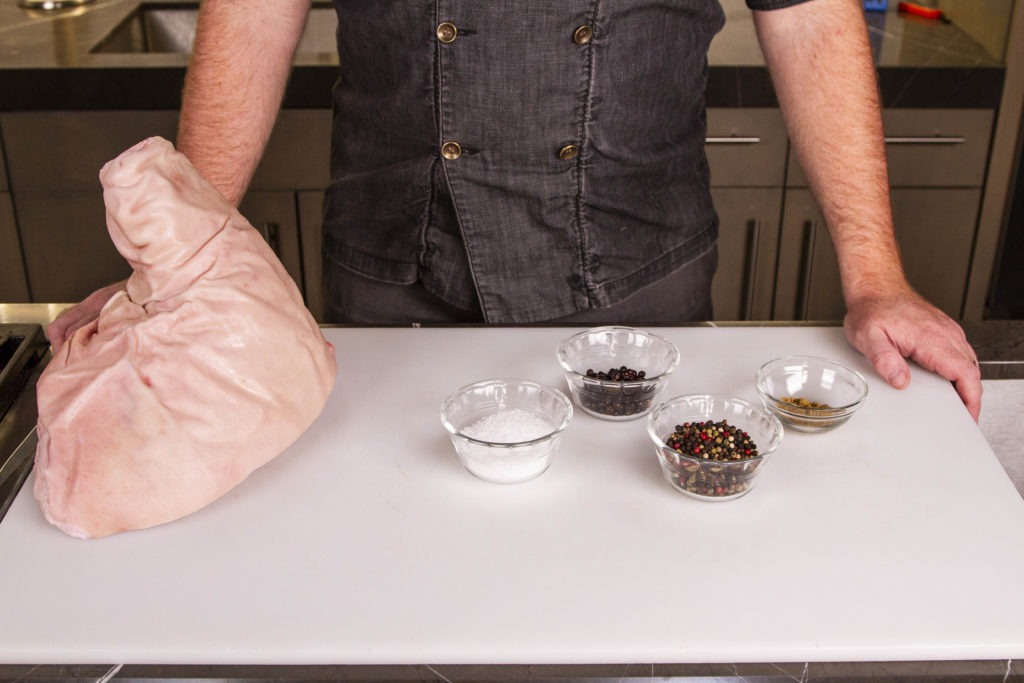
Instructions
The day before serving:
- In a spice grinder or blender, finely grind together the peppercorns, juniper berries, and coriander seeds. Mix with the sugar and salt in a bowl.

- Using a very sharp kitchen knife or a utility knife, score the skin of the pork in a crosshatch pattern. Score it deeply through the fat but try not to cut any of the underlying meat.
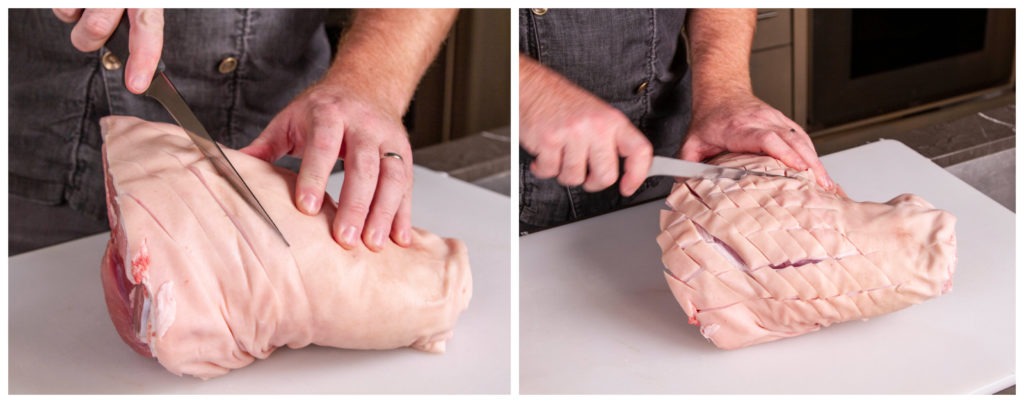
- Rub the spice mixture all over the pork, getting it into the crevices and nooks of the scoring. Rub any exposed meat also. Note: try to not leave much of the spice mixture on the surface of the skin, it will not flavor the dish and may burn in the cooking.
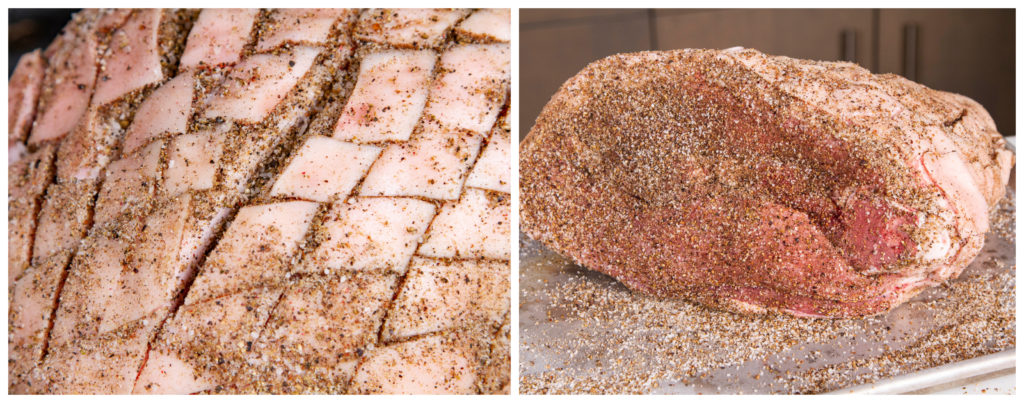
- Place the pork roast on a rimmed cookie sheet, cover with plastic wrap, and allow it to chill in the refrigerator for at least 3 hours, but up to 3 days.
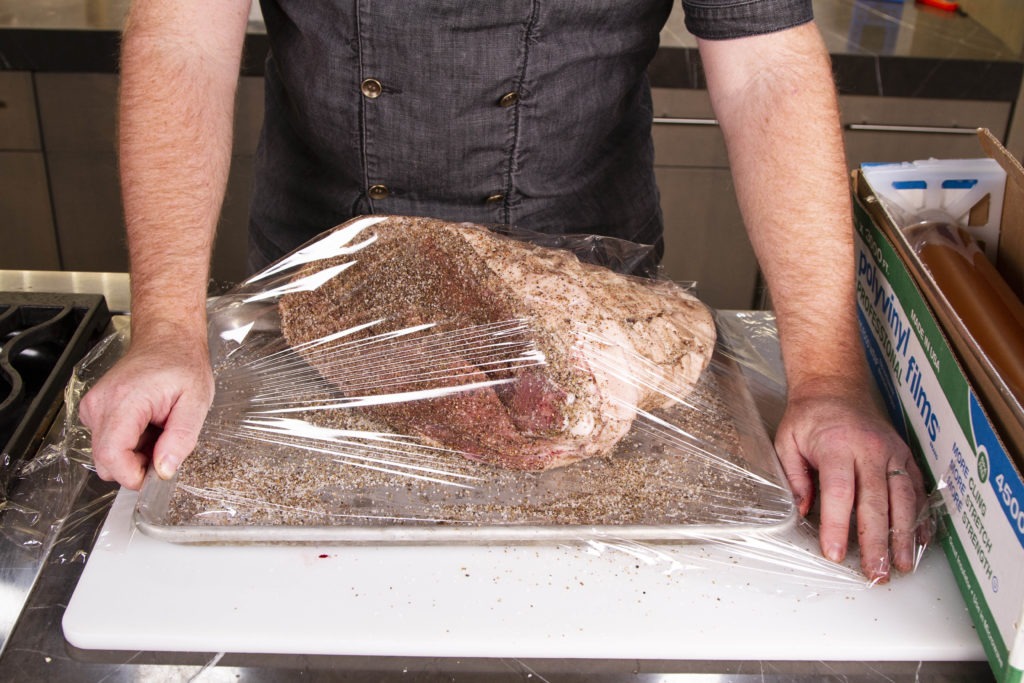
On day of serving:
- Preheat your oven to 225°F (107°C).
- Line a rimmed cookie sheet with aluminum foil. Place the rosemary and cracked garlic in the center of the pan and set a rack in it.
- Set the pork on the rack and pour the wine into the pan.

- Insert the probe from a ChefAlarm into the deepest part of the pork. Set the high-temp alarm on your ChefAlarm for 165°F (71°C).
- Place the roast in the oven and wait. (This could take up to 8 or 9 hours.)

- When the roast reaches 165°F (71°C), as indicated by the ChefAlarm, verify the temperature with a Thermapen®. Then, set a timer—either the built-in timer on the ChefAlarm or a TimeStick®—for 1 hour.
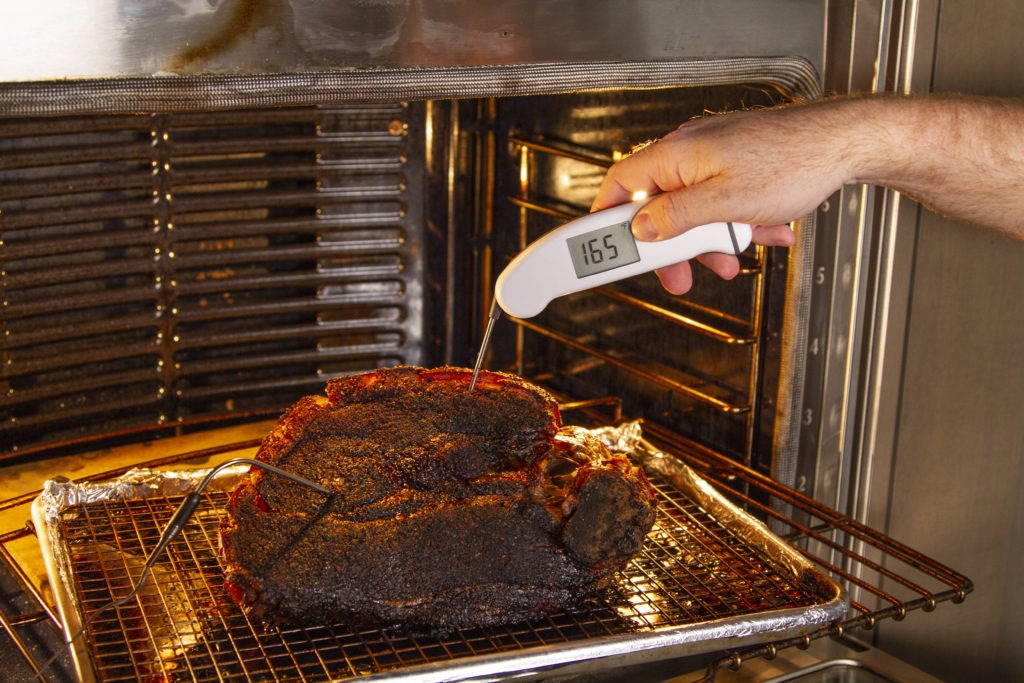
- When the timer expires, remove the roast from the oven and allow it to rest for at least 30 minutes before serving.
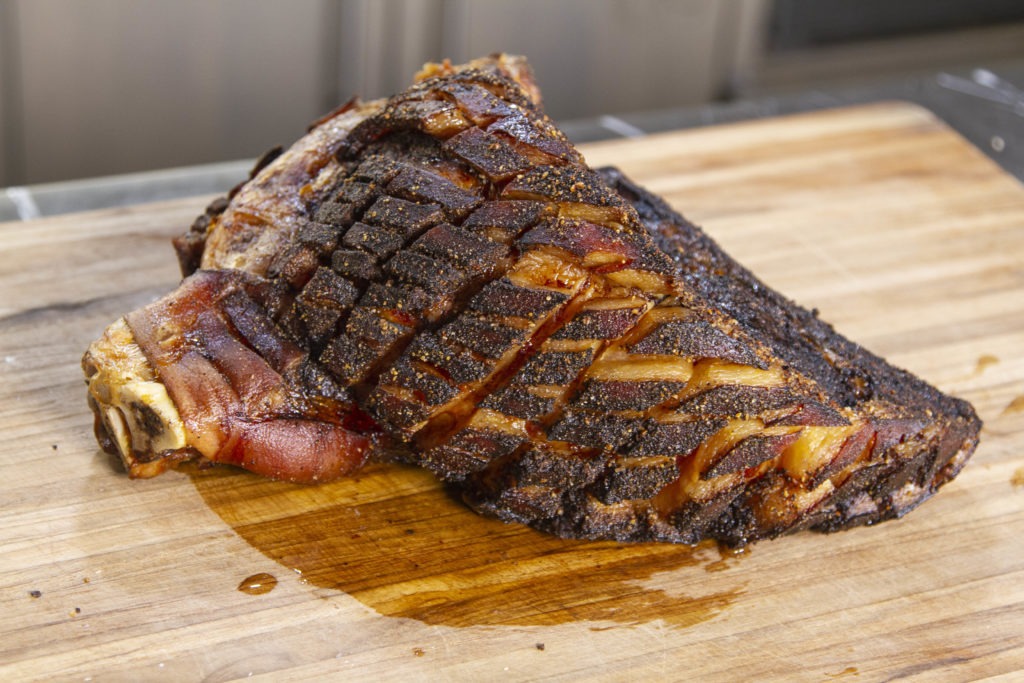
- Carve the pork roast in the scoring lines for convenience and serve with tart pickles and mustard to help cut the fatty richness of the dish.
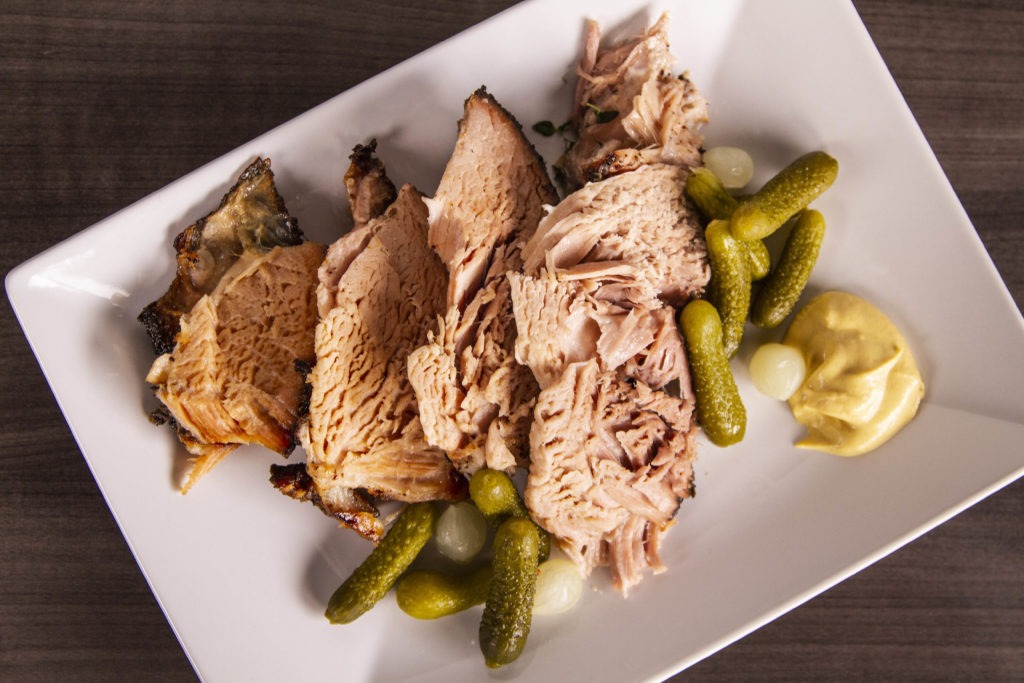
A big, wonderful cut of meat like a skin-on shoulder or leg is an amazing party meal. It feeds lots of people and is so little hassle during cooking! Ring in the new year with this hearty dish, cooked just right with a ChefAlarm thermometer and our best wishes.
Shop now for products used in this post:
Thermapen®
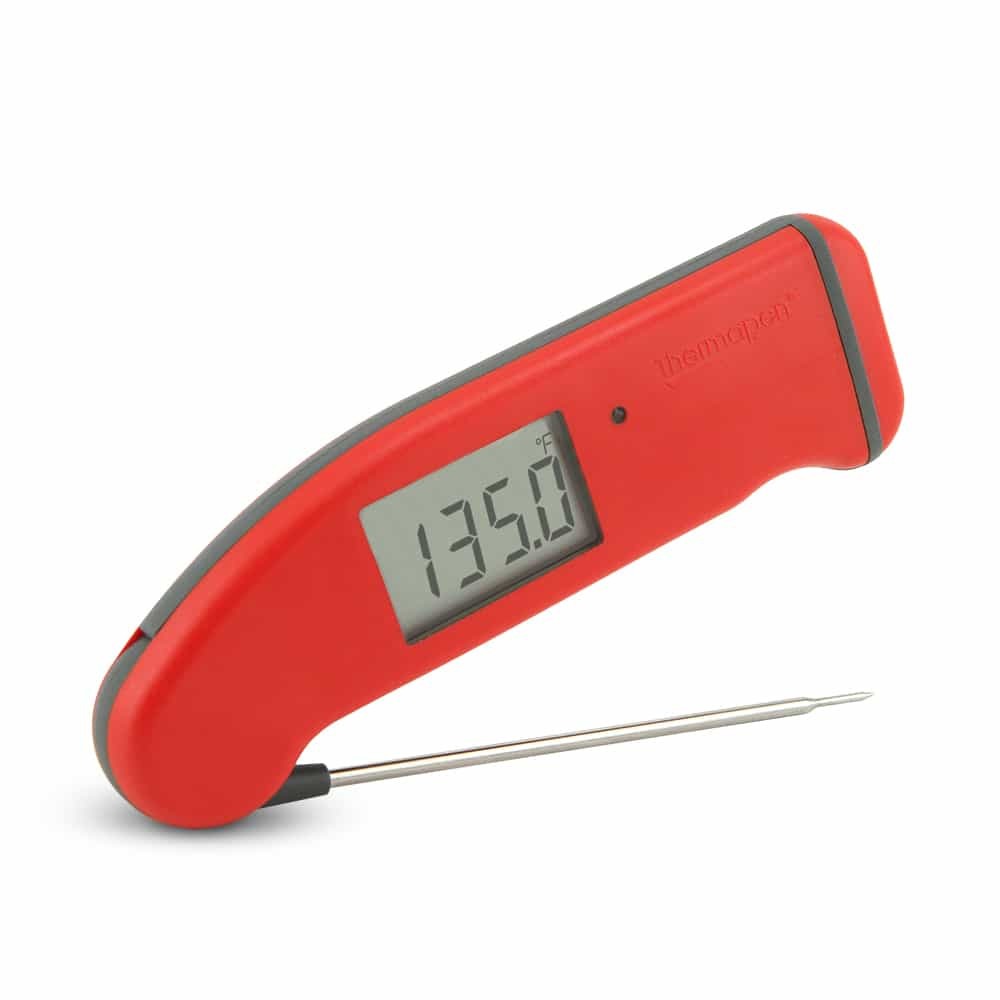 |
TimeStick
 |
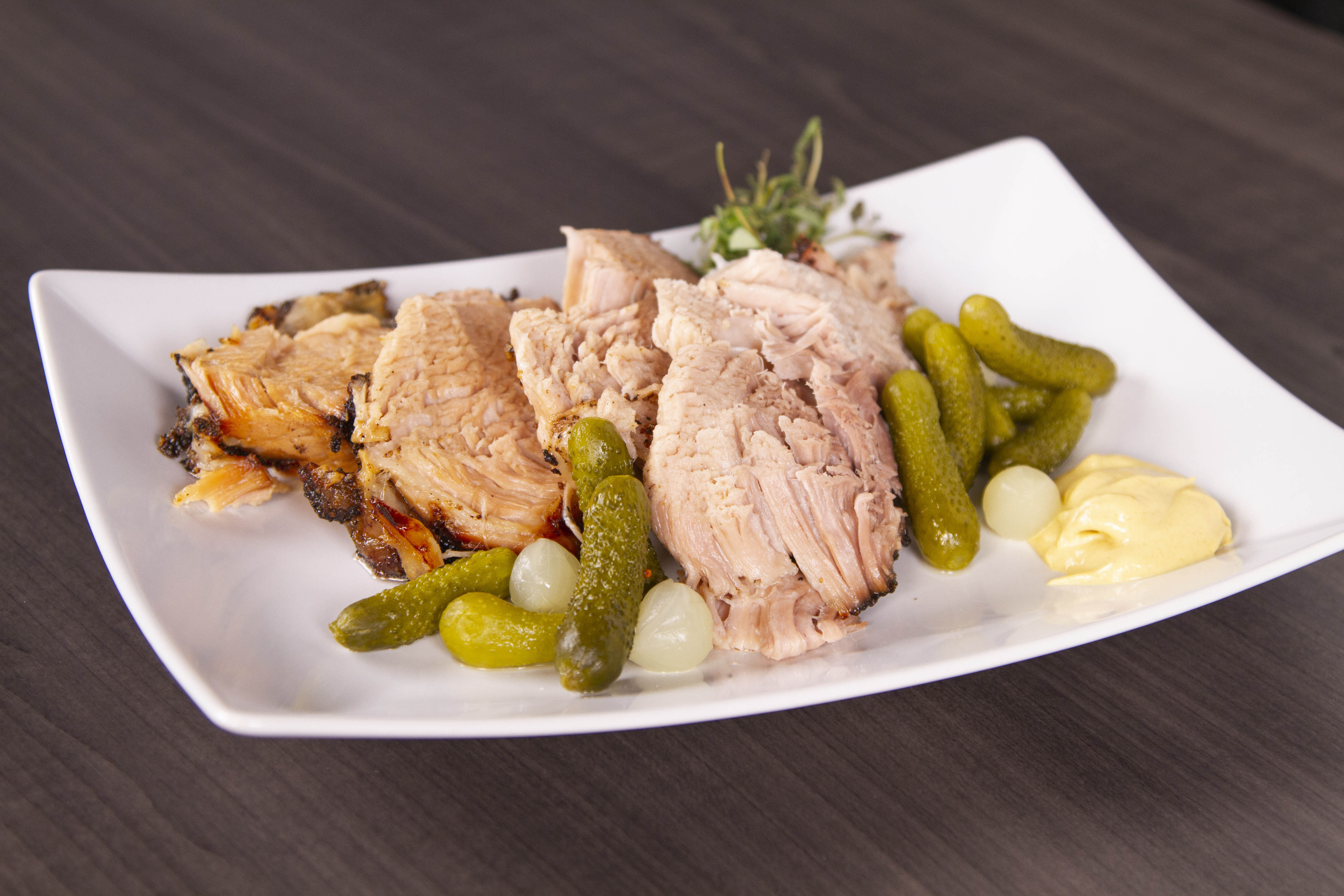

Andre Gervais says
This pork roast recipe sounds like a real beauty, and I will be trying it soon in order to test out my new chef-alarm.
ONTIME says
Add MSG or Adobe mix to the rub and it will enhance all the other spices….pour a cup of white rum in the water tray in addition to the water and it will give the meat fragrance and help tenderize it…..
karen silon says
That is a fresh ham not a skin on pork BUTT!
Martin says
Karen,
Yes, we used a fresh ham for this, but you can also use a skin on butt, if you can’t find a fresh ham.